Water stains on marble countertops are a common concern for homeowners who appreciate the luxurious and elegant appearance of marble but are frustrated by the delicate nature of this natural stone. Marble, composed primarily of calcium carbonate, is a porous material that can easily absorb liquids, leading to stains. Water stains are particularly problematic because they can be caused by something as simple as a water droplet left on the surface, which can then lead to a dull spot or a visible stain. Understanding how water stains form, how to prevent them, and how to remove them can help you maintain the beauty of your marble countertops for years to come.
Water stains on marble countertops often appear as dull, whitish marks that are more noticeable on polished surfaces. These stains occur when water or other liquids penetrate the porous surface of the marble, leaving behind mineral deposits that can dull the stone’s finish. Hard water, which contains high levels of calcium and magnesium, is particularly problematic because it can leave behind more stubborn stains. Over time, these water spots can accumulate and make the countertop look worn or aged, detracting from the overall aesthetic of the kitchen or bathroom.
Preventing water stains on marble countertops is the first line of defense. One of the most effective ways to prevent water stains is by regularly sealing the marble. Sealers create a protective barrier that reduces the stone’s porosity, making it less likely for water and other liquids to penetrate the surface. However, it’s important to note that sealers are not a foolproof solution; they only slow down the absorption of liquids, so spills should still be wiped up promptly. Depending on the type of sealer used and the amount of use the countertop gets, you may need to reseal the marble every six months to a year.
Another preventive measure is to be mindful of how you use your marble countertop. Avoid leaving wet items, such as cups, bottles, or cleaning cloths, directly on the surface for extended periods. Use coasters, trays, or mats to create a barrier between the marble and any potential sources of moisture. Additionally, wiping down the countertop with a soft, dry cloth after use can help remove any water droplets that could lead to stains. Being proactive in keeping the surface dry can significantly reduce the likelihood of water stains forming.
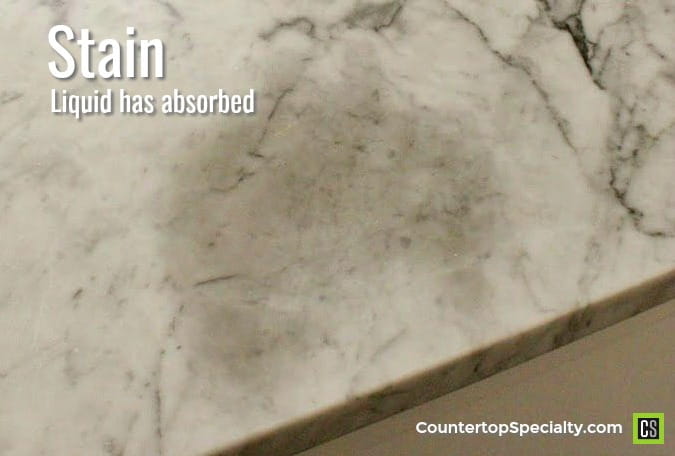
Despite your best efforts, water stains may still occur on marble countertops. When this happens, it’s important to know how to effectively remove them without causing further damage to the stone. One method for removing water stains is to use a poultice. A poultice is a paste made from a soft, absorbent material mixed with a liquid solvent. To treat water stains, you can make a poultice using baking soda and water. Apply the paste to the stain, cover it with plastic wrap, and let it sit for 24-48 hours. The poultice will draw the stain out of the marble. Once removed, wipe the area with a clean, damp cloth and then dry it thoroughly.
For more stubborn water stains, you may need to use a commercial marble cleaner or a specially formulated marble polishing powder. These products are designed to be gentle on marble while effectively removing stains and restoring the stone’s shine. Follow the manufacturer’s instructions carefully, and always test the product on a small, inconspicuous area first to ensure it won’t damage the surface. After treating the stain, reseal the countertop to restore its protective barrier.
In some cases, water stains may have etched the marble surface, leaving a rough, dull area that requires more intensive treatment. Etching occurs when acidic substances, such as lemon juice, vinegar, or even water with a high mineral content, react with the calcium carbonate in the marble, creating a chemical reaction that dulls the surface. If etching has occurred, the affected area may need to be polished to restore the marble’s original shine. This can often be done with a marble polishing compound and a soft cloth or a buffing pad. For deeper etches, professional restoration may be necessary.

It’s also worth noting that not all water stains are the same. Some stains may be caused by a combination of water and other substances, such as oils or soaps, which can create more complex stains that are harder to remove. In these cases, using a poultice with a different solvent, such as hydrogen peroxide or acetone, may be necessary. Again, it’s important to test any treatment on a small area first and to follow up with resealing to protect the marble from future staining.
Maintaining the appearance of marble countertops requires regular care and attention. In addition to sealing and promptly addressing spills, it’s important to clean the marble surface regularly with a pH-neutral cleaner specifically designed for natural stone. Avoid using harsh or acidic cleaners, as these can damage the marble and make it more susceptible to stains and etching. A soft, damp cloth or sponge is usually sufficient for daily cleaning, while more thorough cleanings can be done with a specialized marble cleaner.
Understanding the unique properties of marble can help you take the necessary steps to protect it from water stains and other forms of damage. Marble is a natural stone that adds beauty and value to any home, but it also requires more care and maintenance than other countertop materials. By being proactive and using the right cleaning and maintenance techniques, you can keep your marble countertops looking pristine and avoid the frustration of dealing with unsightly water stains.
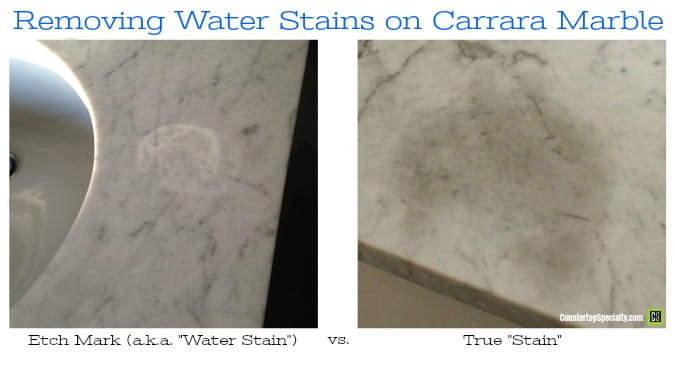
When water stains do occur, addressing them promptly is key to preventing permanent damage. The longer a stain sits on the marble, the more difficult it can be to remove. Regularly inspecting your countertops for signs of staining or etching can help you catch issues early and take action before they become more serious. In some cases, professional help may be needed, especially for deep stains or extensive etching, but many water stains can be managed with simple DIY methods if caught early.
For those considering marble countertops, it’s important to weigh the beauty and elegance of marble against the ongoing maintenance required to keep it in top condition. Water stains are just one of the challenges that come with owning marble, but they can be managed with the right care and attention. If you’re willing to invest the time and effort needed to maintain marble, it can be a stunning and timeless addition to your home. However, if low maintenance is a priority, you may want to consider other countertop materials that are less prone to staining and etching.
Finally, it’s essential to educate anyone in your household about the proper care of marble countertops. Whether it’s a family member or a cleaning service, everyone who uses or cleans the countertop should understand the importance of wiping up spills immediately, using appropriate cleaning products, and avoiding the placement of wet or acidic items directly on the surface. Consistent care and attention from all users will help prevent water stains and other damage, ensuring that your marble countertops remain a beautiful focal point in your home for years to come.
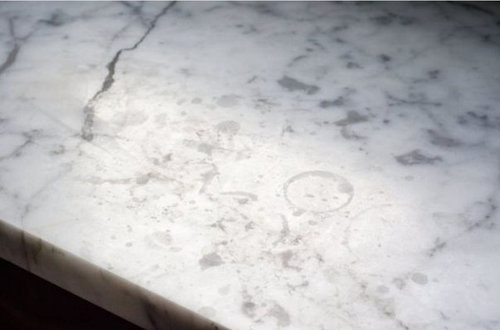
Common Mistakes to Avoid
One common mistake homeowners make with marble countertops is neglecting to seal the surface regularly. While sealing doesn’t make marble completely stain-proof, it significantly reduces the stone’s porosity and helps prevent water stains. Skipping or delaying sealing can leave the marble vulnerable to staining, particularly in high-use areas like the kitchen. To avoid this, set a schedule for resealing based on the manufacturer’s recommendations and the countertop’s usage.
Another mistake is using the wrong cleaning products. Many household cleaners contain acids or harsh chemicals that can damage marble, leading to etching and increased susceptibility to water stains. Always use pH-neutral cleaners designed specifically for natural stone, and avoid using vinegar, bleach, or abrasive scrubbers on marble surfaces. This will help maintain the integrity of the marble and prevent additional staining.
A lack of promptness in dealing with spills is another common error. Water stains often occur because liquids are left to sit on the marble for too long. Even water can cause staining if it’s allowed to seep into the stone, especially if the marble hasn’t been sealed recently. To avoid this, always wipe up spills immediately, and encourage others in your household to do the same.
Improper use of poultices is another area where mistakes can be made. While poultices are effective for removing stains, they can also damage the marble if not used correctly. For example, leaving a poultice on for too long or using an inappropriate solvent can lead to discoloration or further etching. Always follow the recommended guidelines for poultice use, and test any new method on a small, inconspicuous area first.
Finally, underestimating the importance of regular maintenance is a mistake that can lead to more severe problems over time. Marble requires consistent care to remain in good condition, and neglecting regular cleaning, polishing, and sealing can result in a dull, stained, and unattractive surface. By maintaining a routine care schedule and addressing issues as they arise, you can keep your marble countertops looking their best and avoid the hassle of dealing with extensive repairs or restoration.
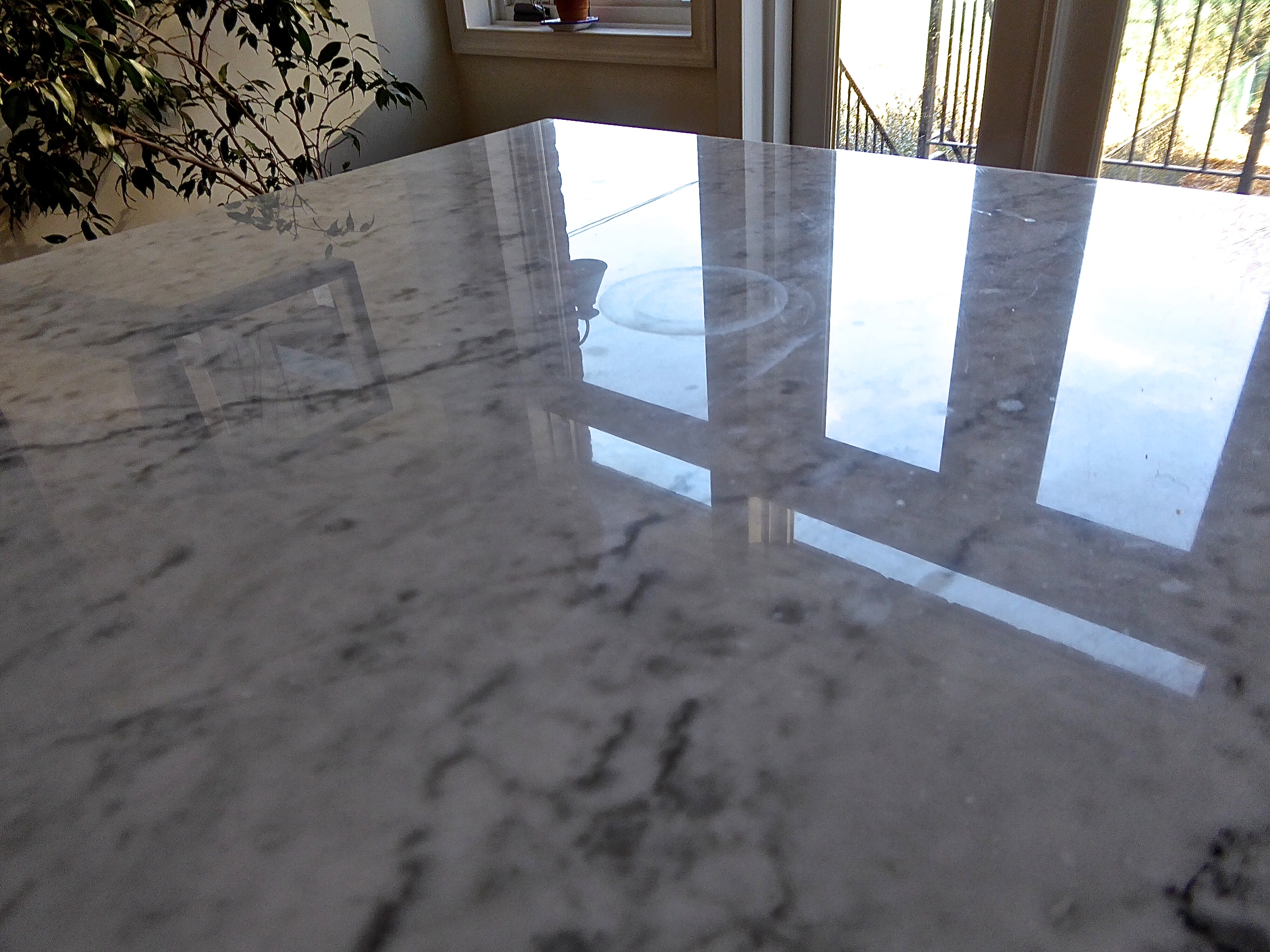
What causes water stains on marble countertops?
Water stains on marble countertops are typically caused by water or other liquids penetrating the porous surface of the marble. As the water evaporates, it can leave behind mineral deposits, particularly if the water is hard, containing high levels of calcium and magnesium. These deposits appear as dull, whitish spots on the marble’s surface. Over time, these stains can accumulate and make the countertop look worn or aged. To prevent water stains, it’s important to regularly seal the marble and wipe up spills promptly.
Can I remove water stains from marble countertops myself?
Yes, you can remove water stains from marble countertops yourself using a few different methods. A common DIY approach is to use a poultice made from baking soda and water. The poultice is applied to the stain, covered, and left to sit for 24-48 hours, drawing the stain out of the marble. For more stubborn stains, you might need to use a commercial marble cleaner or polishing powder. However, if the stain has caused etching, you may need to polish the surface to restore its shine.
How often should I seal my marble countertops to prevent water stains?
The frequency of sealing your marble countertops depends on the type of sealer used and the amount of use the countertop receives. In general, it’s recommended to seal marble countertops every six months to a year. High-traffic areas or countertops that are frequently exposed to water and other liquids may require more frequent sealing. To determine if your countertop needs resealing, you can perform a simple water test by placing a few drops of water on the surface. If the water absorbs into the marble rather than beading up, it’s time to reseal.
What should I avoid when cleaning marble countertops?
When cleaning marble countertops, avoid using harsh or acidic cleaners, as they can damage the stone and increase its susceptibility to stains and etching. Products like vinegar, bleach, and lemon juice are particularly harmful to marble. Instead, use a pH-neutral cleaner specifically designed for natural stone. Additionally, avoid abrasive scrubbers, as they can scratch the surface. For regular cleaning, a soft, damp cloth or sponge is usually sufficient, and more thorough cleanings can be done with a specialized marble cleaner.
Can water stains on marble countertops become permanent?
Water stains on marble countertops can become permanent if not addressed promptly. Over time, the minerals in the water can penetrate deeper into the marble, making the stains more difficult to remove. Additionally, if the water stain has caused etching, the damage may be irreversible without professional restoration. Regularly sealing the marble and wiping up spills immediately can help prevent water stains from becoming permanent. If you notice a stain, it’s best to treat it as soon as possible to avoid long-term damage.
Is it worth investing in marble countertops despite the risk of water stains?
Marble countertops are a luxurious and timeless addition to any home, offering a unique and elegant aesthetic that’s hard to match with other materials. While marble does require more maintenance and care, including the risk of water stains, many homeowners find the beauty and value it adds to their home worth the investment. By taking proactive steps to prevent and address water stains, you can enjoy the benefits of marble countertops while minimizing the potential downsides. If you’re willing to invest the time and effort needed to care for marble, it can be a stunning and enduring feature in your kitchen or bathroom.
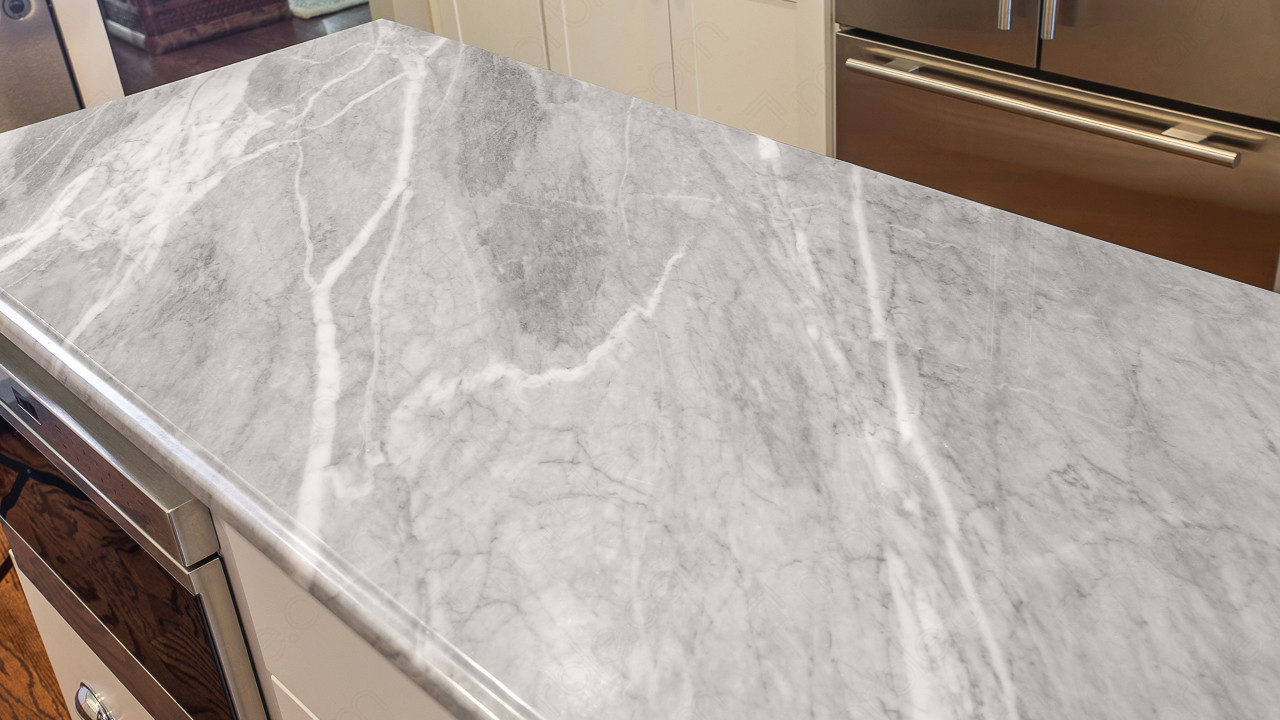
Removing etching / water marks from my marble table using etch remover

Related articles:
